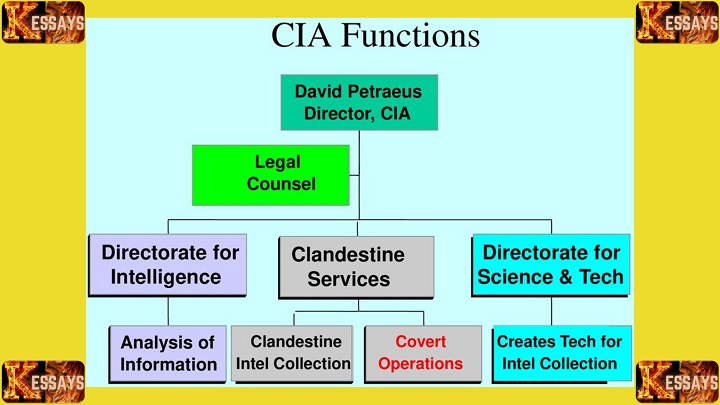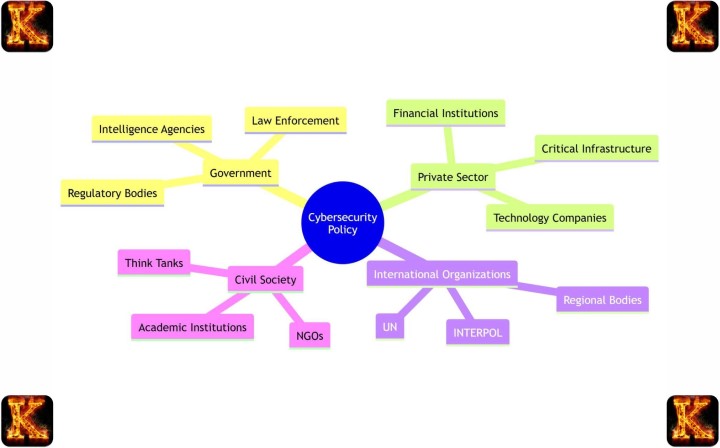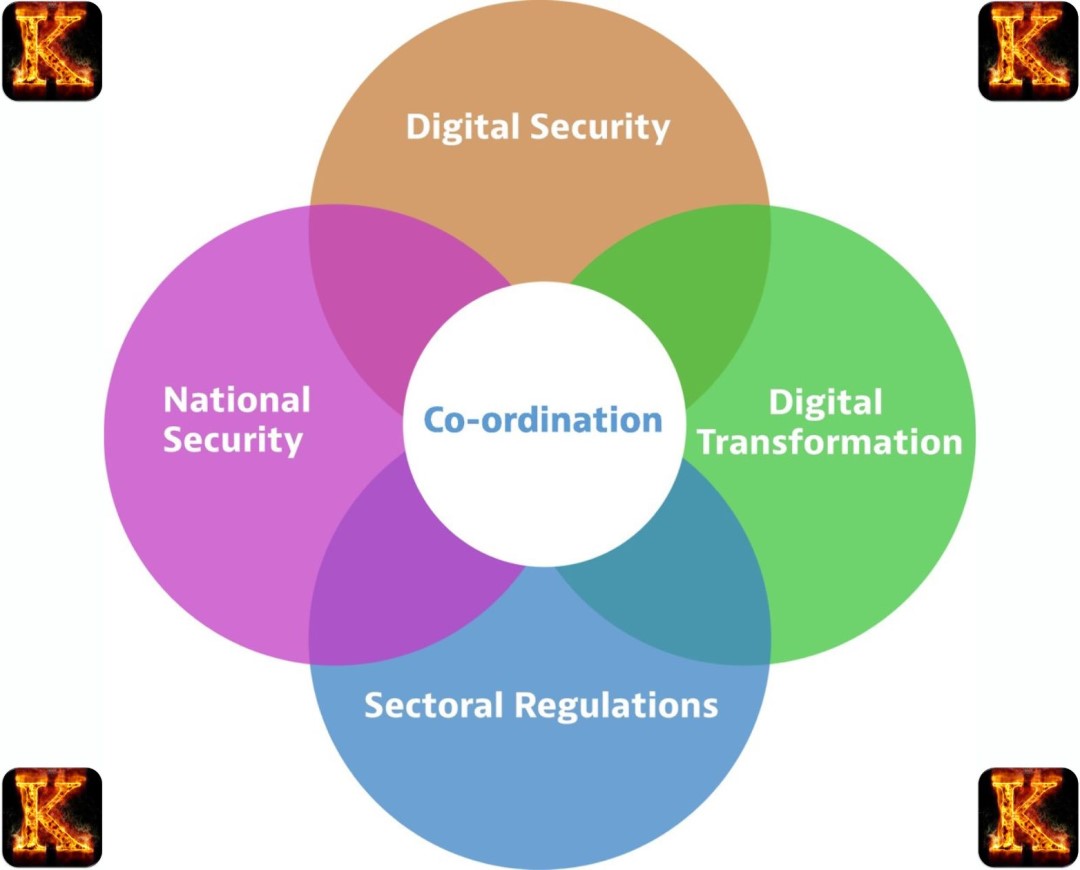I. Introduction
The National Intelligence Model is a comprehensive framework that defines how a state produces, manages, and applies intelligence for the protection of national interests. It establishes the principles, structures, and processes that shape how intelligence flows from initial collection to final decision-making. At its core, the model provides a systematic way for governments, law enforcement agencies, and national security institutions to transform raw information into insight that supports strategy, operations, and public safety.
The NIM begins from the first principle that security must be guided by assessed risk rather than guesswork or reactive responses. It emphasizes intelligence-led practice, prioritization, and structured coordination across agencies. By promoting shared understanding of threats and consistent analytical standards, the model allows institutions to align objectives, prevent capability duplication, and create a unified national picture of vulnerabilities and opportunities.
The model incorporates key concepts such as intelligence cycles, tasking processes, analytical development, decision support, information sharing, and interagency collaboration. It also embeds mechanisms that promote accountability and professional standards within intelligence practice. These elements ensure that intelligence work is deliberate, transparent, and aligned with national security priorities rather than informal or fragmented.
As a result, the National Intelligence Model provides a disciplined foundation for anticipating risks, guiding resource allocation, and supporting government leaders in making informed choices. It ensures that national security decisions are intelligence-led, not reactive.
II. Core Components of the National Intelligence Model
1. Threat and Risk Assessment
Threat and risk assessment is the foundation of the National Intelligence Model because it establishes the priorities that guide intelligence activity. It is a structured process that examines intent, capability, opportunity, and vulnerability to determine which threats have the greatest potential impact on national security. This assessment allows institutions to allocate resources based on measurable risk rather than political pressure or operational guesswork.
A robust assessment incorporates classified and open-source material, historical patterns, and predictive indicators. It identifies hostile state actors, non-state groups, cyber adversaries, criminal enterprises, and emerging geopolitical pressures. By converting uncertainty into structured intelligence judgments, the process ensures that national security efforts focus on the most consequential risks.
United States Example
The Office of the Director of National Intelligence prepares the Annual Threat Assessment, which synthesizes analysis across the US Intelligence Community. It prioritizes issues such as state-backed cyber intrusions, terrorism, and great-power competition. This assessment directly influences federal budgeting, military planning, and homeland security posture.
2. Intelligence Collection
Intelligence collection is the systematic acquisition of information necessary to understand identified risks and fill gaps highlighted by the threat assessment. The NIM emphasizes targeted collection driven by specific intelligence requirements rather than broad, unfocused gathering. This ensures that resources are used effectively and that collection activities align with national priorities.
Agencies rely on multiple technical and human methods to achieve a balanced intelligence picture. This includes HUMINT for interpersonal insight, SIGINT for intercepted communications, OSINT for publicly accessible data, GEOINT for imagery and spatial analysis, FININT for financial activity, and cyber intelligence for monitoring adversarial activity in digital environments. Effective collection is governed by tasking processes that link operational teams, collection platforms, and analytical components.
First-World Example (UK and US Five Eyes Partnership)
GCHQ and the NSA coordinate SIGINT collection through shared protocols and interoperable systems. Their integrated approach allows them to detect, trace, and disrupt communications associated with foreign terrorist actors, contributing to prevention of attacks targeting Western airports and public transportation systems.
3. Intelligence Analysis and Fusion
Intelligence analysis converts raw data into understanding. Within the NIM, analysis is conducted using structured methodologies that reduce bias, ensure analytical rigor, and support evidence-based assessments. Analysts identify patterns, evaluate reliability, assess competing hypotheses, and generate intelligence products that support decision-making. Fusion integrates multiple intelligence streams into a single coherent picture, improving accuracy and reducing blind spots.
Fusion centers play a critical role by linking agencies, providing shared situational awareness, and supporting cross-jurisdictional coordination. Their analytical outputs inform operational planning, investigative direction, and national-level assessments. The NIM emphasises that analysis must be continuous and iterative because threat environments evolve rapidly.
European Union Example
Europol’s European Counter Terrorism Centre consolidates HUMINT from member states, travel records, digital forensics, and financial intelligence. By fusing these datasets, analysts identify cross-border extremist networks and support member states in conducting synchronized disruptions.
4. Dissemination and Decision Support
Dissemination ensures that intelligence reaches the actors who require it to make timely decisions. Within the NIM, dissemination follows structured pathways that define who receives intelligence, how quickly it must be delivered, and what level of classification is appropriate. Decision support goes beyond simple reporting; it ensures that intelligence is aligned with the operational and strategic needs of recipients.
The NIM stresses clarity, relevance, and timeliness because intelligence loses value if delivered too late, in an unclear format, or to the wrong authority. Effective dissemination supports policing operations, border security, military readiness, and executive decision-making. The model also encourages two-way communication so that consumers provide feedback, which refines future collection and analysis.
United Kingdom Example
When MI5 evaluates intelligence indicating an imminent attack, the information is transmitted through established channels to counterterrorism police and the Home Office. These agencies activate emergency protocols, increase security postures, and conduct targeted operations, illustrating how rapid dissemination directly prevents harm.
Read Also: The Crucial Role of Counterintelligence
III. Additional Key Features of the National Intelligence Model
5. Strategic and Tactical Intelligence
The National Intelligence Model distinguishes between two complementary tiers of intelligence work that guide national security decision-making. Strategic intelligence supports long-range planning and anticipates shifts in geopolitical, technological, or socio-economic conditions that may affect national stability. It informs high-level policies, capability development, and national resilience measures.
Tactical intelligence focuses on immediate, operational requirements by supplying units in the field with precise, time-sensitive insights that support investigations, interdictions, and targeted operations. This dual structure ensures that governments can maintain a long-term security posture while responding effectively to short-term threats.
6. NIM Levels of Decision-Making
The United Kingdom’s adaptation of the National Intelligence Model created a tiered decision-making system that is now widely emulated in other developed states. The structure organizes intelligence responsibilities according to the scale and complexity of the threat.
Level 1 addresses local challenges and routine policing issues that are contained within a single jurisdiction.
Level 2 covers cross-regional or multi-jurisdictional threats that require integrated responses across agencies or regions.
Level 3 focuses on national and transnational threats such as terrorism, espionage, and serious organized crime, which are typically managed by national-level bodies with advanced intelligence and investigative capabilities.
This tiered model provides clarity in responsibility assignment and prevents gaps or overlaps in national security governance.
7. Practical Applications of the NIM
The National Intelligence Model underpins contemporary intelligence-led practice across multiple national security domains. In counterterrorism, the model guides how agencies identify extremist networks, track communication flows, and map funding streams to disrupt planned attacks. In cybersecurity, it structures the identification of hostile state actors, intrusion methods, and critical infrastructure vulnerabilities.
Counterintelligence efforts use the model to uncover foreign intelligence operations, detect recruitment attempts, and protect national secrets. In combating organized crime, the NIM framework supports the systematic dismantling of criminal enterprises by mapping supply chains, financial systems, and cross-border linkages. These applications show how the model translates intelligence principles into concrete operational advantages.

IV. International Collaboration
8. Multinational Intelligence Sharing
The National Intelligence Model extends beyond domestic structures by emphasizing systematic collaboration with foreign intelligence and law enforcement partners. Modern threats such as cybercrime, terrorism, transnational organized crime, and illicit financial flows routinely cross borders, making multinational intelligence sharing an essential component of contemporary security practice. Within the NIM framework, cooperation is guided by shared indicators, standardized analytical methods, and common operational priorities, creating a unified understanding of international threat landscapes.
Multinational intelligence sharing involves exchanging raw data, analytical products, biometrics, financial intelligence, and digital forensics across jurisdictions. It depends on trusted networks, interoperable systems, and harmonized legal standards that enable agencies to coordinate investigations while protecting sensitive sources and methods. This approach ensures that intelligence gaps in one country do not become vulnerabilities for others, and that operations are based on a complete picture rather than isolated national fragments.
First-World Example (Interpol, U.S., U.K., EU)
A coordinated operation led through Interpol and supported by Europol and member states illustrates the role of multinational intelligence collaboration. Shared biometric data, cyber indicators, and financial intelligence enabled authorities to map a distributed cybercrime network involved in large-scale credit card theft. By aligning investigative timelines and integrating intelligence across several national agencies, partners executed synchronized arrests in multiple countries, demonstrating how the NIM’s principles of structured sharing and joint analysis enhance global security outcomes.
Read Also: The Intelligence Cycle
V. Ethical, Legal, and Oversight Considerations
9. Privacy, Rights, and Civil Liberties
A core feature of the National Intelligence Model is its requirement that intelligence activities operate within defined legal and ethical boundaries. Democracies with advanced intelligence systems embed proportionality, necessity, and legitimacy into all stages of the NIM cycle. This applies to threat assessments, intelligence collection, analytical workflows, data retention, and information-sharing practices.
NIM-based operations must account for the legal frameworks that regulate surveillance, digital monitoring, data protection, and the use of covert methods. These constraints ensure that HUMINT, SIGINT, OSINT, and cyber intelligence activities respect civil liberties. The model reinforces the principle that intelligence-led decision-making cannot undermine constitutional rights or exceed statutory mandates. By embedding legal compliance into the intelligence workflow, the NIM strengthens public trust and operational credibility, enabling agencies to conduct security activities without eroding democratic norms.
10. Oversight and Accountability
Robust oversight is essential for ensuring that intelligence agencies remain aligned with national laws and ethical standards. The NIM supports structured accountability by creating clear audit trails, defined roles, and transparent justification for intelligence prioritization and operational decisions. This allows external bodies to assess whether agencies such as MI5, CIA, or GCHQ operated within authorized boundaries, used appropriate methods, and maintained the integrity of their intelligence processes.
In the United States, the Senate and House Intelligence Committees oversee activities of the CIA, NSA, and FBI, reviewing compliance with statutory authorities and evaluating how intelligence products influence national security decisions. In the United Kingdom, the Intelligence and Security Committee (ISC) scrutinizes MI5, MI6, and GCHQ, ensuring that intelligence-led operations respect legal constraints and adhere to ministerial directives. These structures demonstrate how first-world nations use parliamentary and congressional oversight to reinforce the accountability mechanisms embedded in the National Intelligence Model.
Through coordinated legal standards and formal review mechanisms, the NIM ensures that intelligence activity remains both operationally effective and democratically legitimate.
VI. Adaptation to Future Challenges
11. Artificial Intelligence and Big Data
The National Intelligence Model emphasizes continuous evolution to address emerging threats and leverage technological innovation. Artificial intelligence and big data analytics are increasingly central to modern intelligence operations. Within the NIM, AI supports automated processing of massive data streams, pattern recognition, anomaly detection, and predictive modeling, enabling analysts to identify threats more efficiently and with greater precision. Big data integration allows the fusion of diverse intelligence sources, including HUMINT, SIGINT, OSINT, GEOINT, and cyber intelligence, into a comprehensive operational picture.
However, the use of AI and big data introduces new challenges. Algorithmic bias can distort threat assessments, leading to misallocation of resources or unjustified targeting. Over-surveillance risks violating privacy and civil liberties, which the NIM mitigates through strict governance, legal compliance, and ethical frameworks embedded in intelligence workflows. Adaptation within the NIM ensures that technological tools amplify operational effectiveness while maintaining accountability and proportionality.
12. Deepfakes, Disinformation, and Influence Operations
Emerging digital threats such as deepfakes, disinformation campaigns, and foreign influence operations have significant implications for national security. The NIM framework incorporates strategies to detect, assess, and counter these threats systematically. Intelligence analysts evaluate the credibility, origin, and potential impact of manipulated media or coordinated messaging campaigns. Fusion processes combine digital intelligence with HUMINT, SIGINT, and OSINT to produce actionable insights, enabling governments to respond to attempts at election interference, societal destabilization, or reputational harm.
By embedding disinformation monitoring into intelligence cycles, the NIM ensures that threat identification and mitigation are proactive rather than reactive. This aligns with the model’s foundational principle that national security decisions must be intelligence-led and based on evidence, not perception.
13. Rapid Technological Change
The pace of technological advancement demands continual updates to the National Intelligence Model. Emerging technologies such as quantum computing, autonomous systems, advanced cyber tools, and next-generation communication platforms alter the threat landscape and the capabilities of both adversaries and intelligence agencies. Within the NIM, these changes necessitate adjustments in collection methods, analytical techniques, fusion protocols, and dissemination procedures.
Adaptation also involves workforce development, integrating specialists in AI, cyber operations, and digital forensics, ensuring that intelligence agencies remain capable of leveraging innovation while countering technologically sophisticated threats. By institutionalizing flexibility, continuous learning, and technology integration, the NIM preserves its relevance and effectiveness in a rapidly evolving security environment.
Read Also: Intelligence Gathering Tools: Data Collection Decision-Making
VII. Case Studies
A. United Kingdom – Original Developer of the NIM
The United Kingdom pioneered the National Intelligence Model as a structured framework to coordinate policing and national security operations. The UK’s model emphasizes intelligence-led practice, integrating threat assessment, collection, analysis, and dissemination within a tiered decision-making system. It established foundational principles such as proportionality, multi-agency coordination, and fusion of multiple intelligence streams.
These concepts have been widely adopted by Western nations as a blueprint for organizing law enforcement and intelligence agencies to respond to both local and national threats. The UK experience demonstrates how a standardized intelligence framework improves operational effectiveness, resource allocation, and strategic planning across jurisdictions.
B. United States – NIM Principles Across Agencies
In the United States, the National Intelligence Model has been adapted and applied across federal and state agencies to enhance coordination and operational efficiency. Post-9/11 intelligence reforms institutionalized NIM principles through the Office of the Director of National Intelligence (ODNI), the Federal Bureau of Investigation (FBI), the Department of Homeland Security (DHS), and state-level fusion centers.
These adaptations focus on intelligence-led decision-making, integrated threat assessment, and rapid dissemination of actionable intelligence. The US case illustrates how the NIM supports both domestic security and counterterrorism operations by creating a structured environment for sharing HUMINT, SIGINT, OSINT, GEOINT, and cyber intelligence across agencies while maintaining legal and ethical compliance.
C. Interpol – Intelligence-Led Global Coordination
Interpol applies NIM principles at an international scale to coordinate intelligence among its 196 member states. By leveraging standardized methodologies for threat assessment, collection, analysis, and dissemination, Interpol enables timely responses to transnational threats including terrorism, cybercrime, human trafficking, and financial crime. Intelligence products are shared across borders with strict protocols to ensure reliability, security, and adherence to national laws.
This global application demonstrates how the NIM framework can extend beyond national boundaries, providing a cohesive structure for multinational operations, joint investigations, and real-time operational support. Interpol’s experience underscores the importance of interoperability, trust, and standardized procedures in executing intelligence-led operations at a global scale.
VIII. Conclusion
The National Intelligence Model is a foundational framework for contemporary national and international security management. Its enduring relevance stems from its systematic approach to intelligence collection, structured analysis, and fusion of multi-source information to create actionable insights. By embedding ethical safeguards, legal compliance, and oversight mechanisms, the NIM ensures that intelligence-led operations protect civil liberties while maximizing operational effectiveness.
The model’s adaptability allows it to respond to evolving threats such as state-sponsored cyberattacks, transnational terrorism, influence operations, and complex organized crime networks. Its emphasis on clear decision-making hierarchies, tactical and strategic intelligence integration, and interoperability enables both national agencies and multinational organizations, including Interpol, to operate cohesively across jurisdictions.
In essence, the NIM provides a disciplined, intelligence-led framework that transforms raw data into informed decisions, aligns resources with risk, and strengthens both domestic and global security. As technological innovation, disinformation threats, and geopolitical challenges continue to develop, the NIM remains a dynamic and essential tool for ensuring national resilience, public safety, and international stability.


Comments are closed!